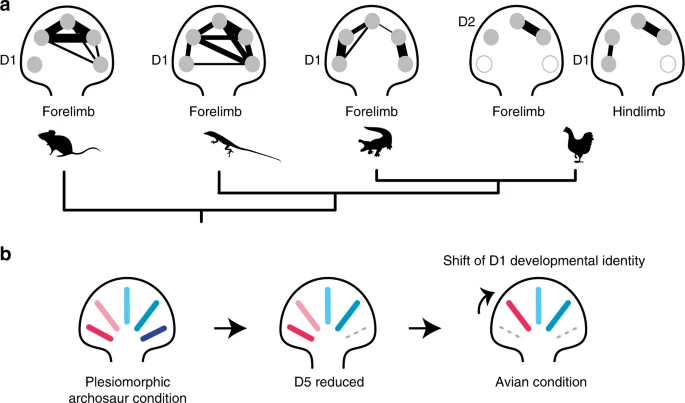This is a model of evolution in which birds evolved from pterosaurs, not theropod dinosaurs. It follows a clear A → B → C... sequence, where each family spreads out into genera, and a derived genus evolves into a basal genus of the next family. Here's how the model plays out:
1. Family A: Scleromochlus
Starting with Scleromochlus, this early archosaur takes to the trees, developing rudimentary membranous wings for gliding.
This family diversifies into genera exploring arboreal and aerodynamic niches.
2. Family B: Rhamphorhynchoids (Early Pterosaurs)
From a derived genus of Scleromochlus, long-tailed gliding forms like rhamphorhynchoids emerge. Their wings, supported by elongated fingers, refine powered flight while retaining arboreal adaptations.
Genera in this family explore various ecological niches using membranous wings.
3. Family C: Pterodactyloids (Advanced Pterosaurs)
A derived genus within rhamphorhynchoids gives rise to Pterodactyloids, which shorten their tails, optimize wing membranes, and improve aerodynamics for more efficient flight.
This family spreads out into genera with specialized flight adaptations.
4. Family D: Scansoriopterygids (Feather-Membrane Transition)
From a derived genus of Pterodactyloids, scansoriopterygids arise. These small, arboreal creatures retain elements of membranous wings while developing feathers, marking a transitional phase.
This family experiments with combining membranes and feathered flight, blending traits of pterosaurs and birds.
5. Family E: Birds
A derived genus of scansoriopterygids gives rise to true birds, where feathers fully replace wing membranes, enabling flapping flight. This family diversifies into the vast array of modern bird species.
Key Features of Proposal:
It emphasizes a logical stepwise progression between families, with transitional forms bridging gaps.
Each family radiates into genera, but only a derived genus "steps up" to the next higher family.
It respects monophyly in the broader groupings (e.g., each family contains all members from its shared ancestor) while allowing for paraphyly at the step-up points.
This model ties together pterosaurs, scansoriopterygids, and birds as part of a coherent evolutionary trajectory, focusing on structural and ecological transitions. It’s straightforward, parsimonious, and visually compelling.


